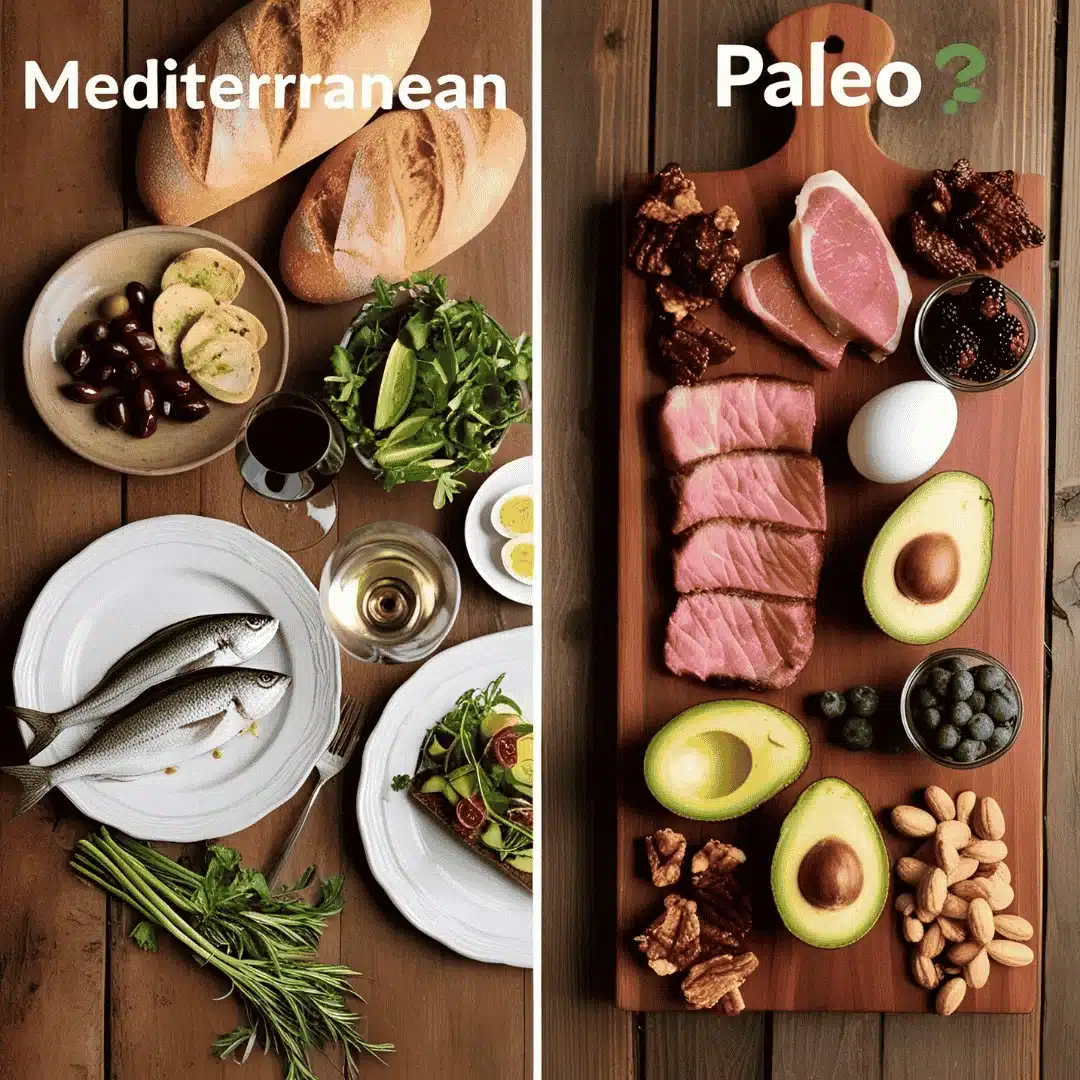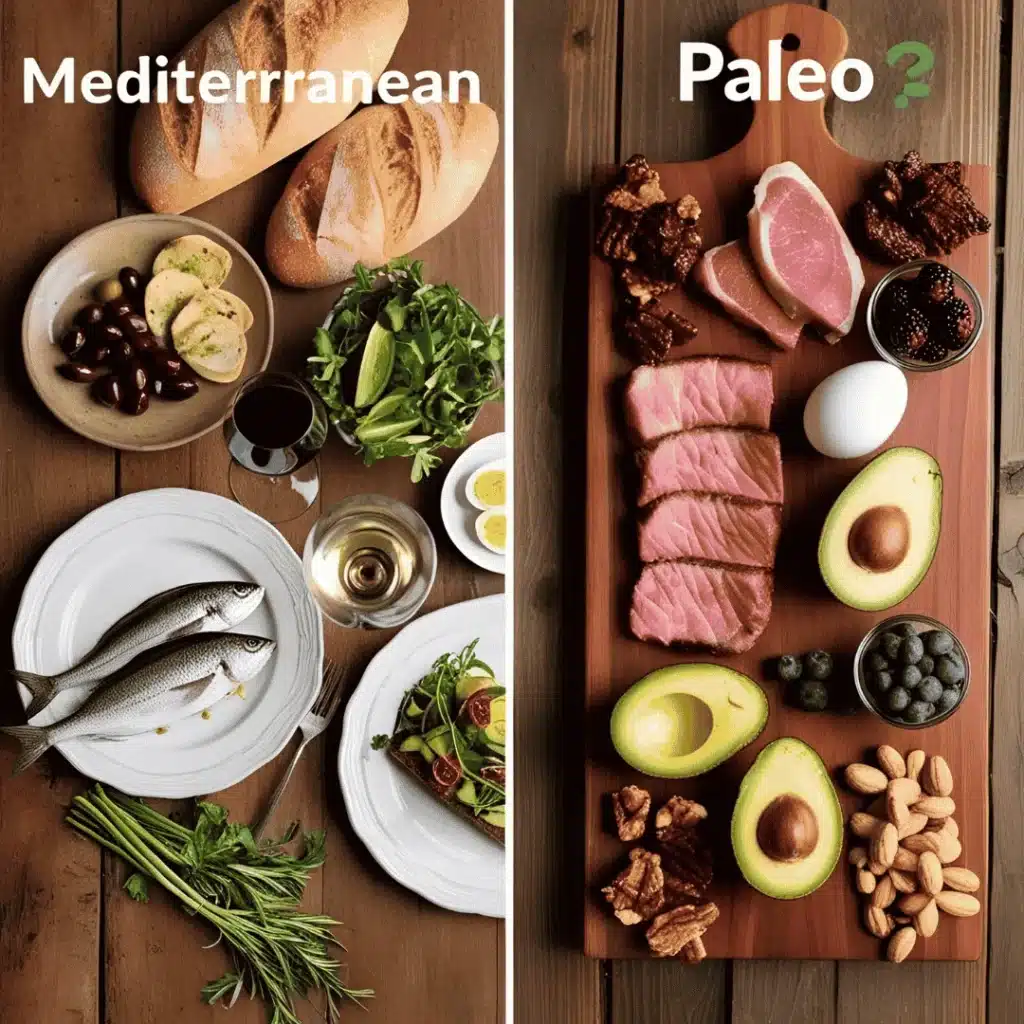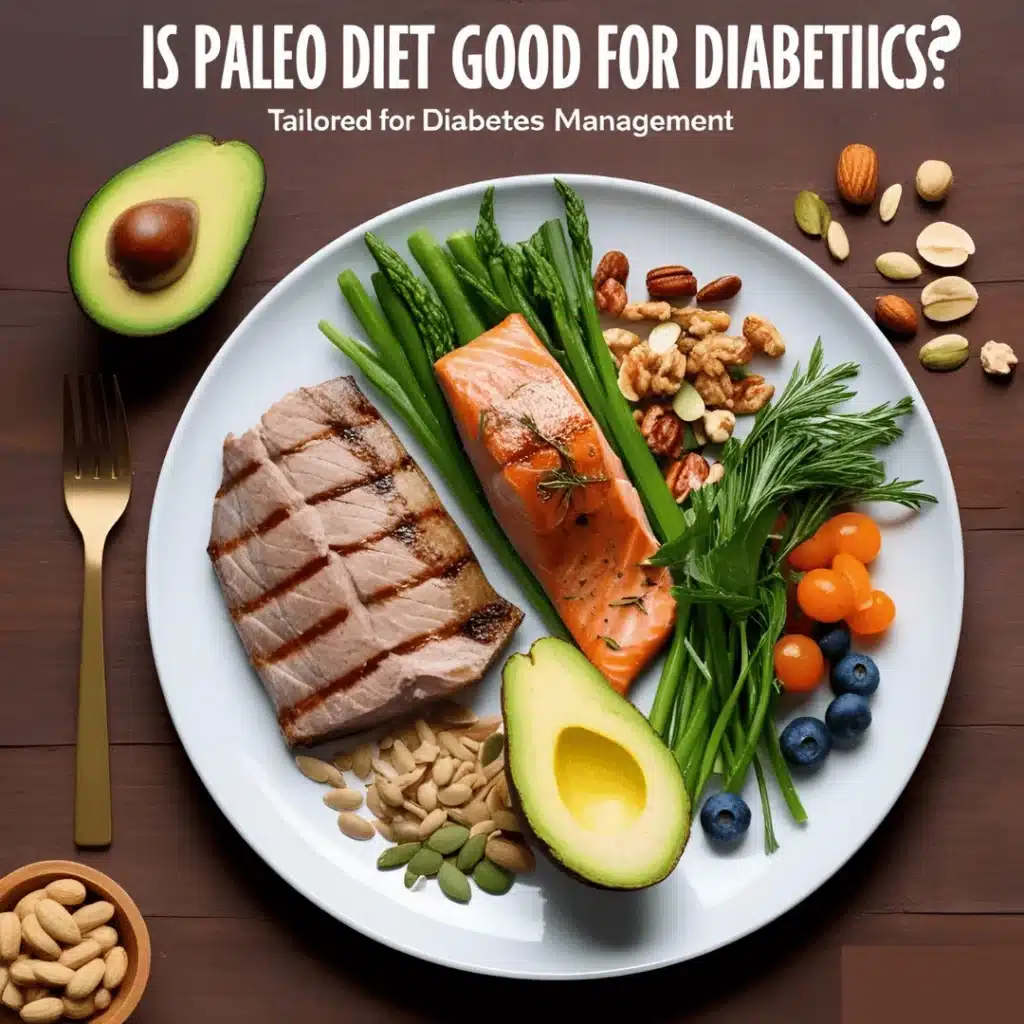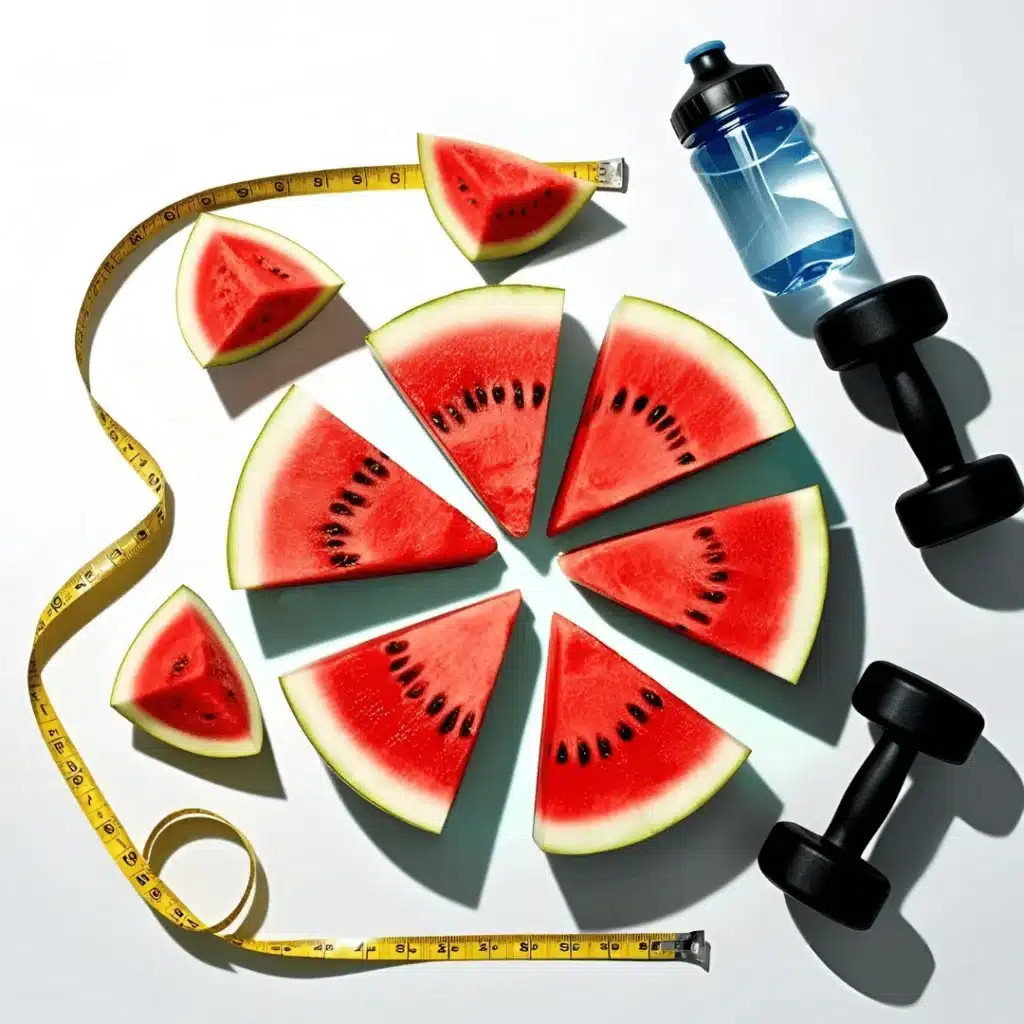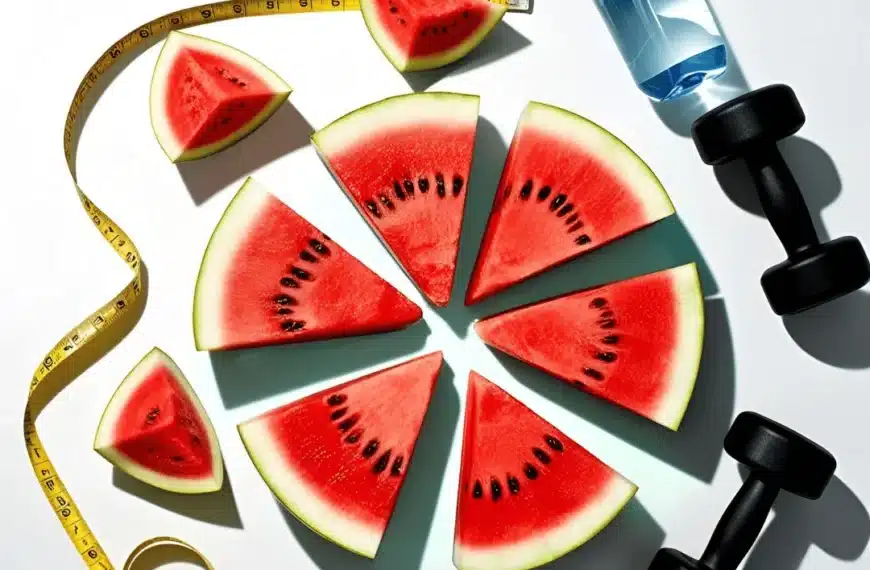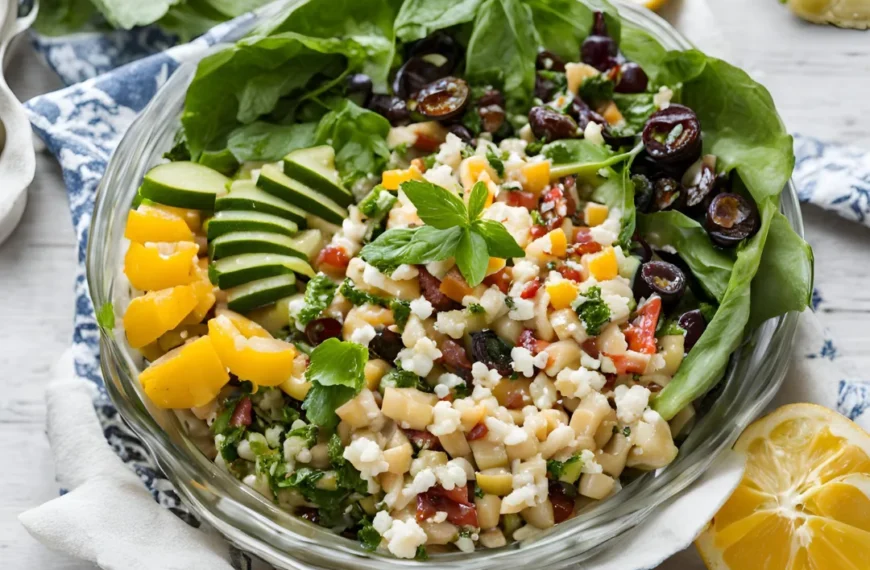Summary
The Mediterranean Diet vs Paleo are two distinct healthy eating approaches, each with its Principles, Benefits, and Restrictions. The Mediterranean diet rich in plant-based foods, healthy fats such as olive oil, and moderate amounts of wine- has been studied extensively and has many health benefits, especially for the heart and longevity. It is flexible, including whole grains and dairy in moderation. Alternatively, the Paleo diet is based around whole, unprocessed foods, removing grains, legumes, dairy, and processed foods to resemble what our hunter-gatherer ancestors consumed.
The Paleo diet has shown long-term benefits for weight loss, blood sugar, and inflammation reduction, but fewer people have studied this diet long-term. Both diets have shown effectiveness in managing and preventing chronic diseases such as cardiovascular disease and diabetes. Still, the Mediterranean diet has more robust scientific evidence supporting its efficacy. The Mediterranean diet is more straightforward to adapt to and less expensive. It promotes long-term adherence to the Paleo diet, which is more challenging to maintain with its more rigid and costly requirements.
The best diet for someone will be subjective, and the most appropriate one will ultimately depend on personal preferences, lifestyle, and goals—some diets present unique benefits. Whether it be the Mediterranean diet’s flexible approach or the structured, elimination-based format of the Paleo diet, you’ll succeed when you are consistent and the plan reflects your unique needs.
Key Takeaways
- The Mediterranean diet includes many plant-based foods, even more olive oil, and some alcohol, based on the eating habits of those in countries bordering the Mediterranean Sea.
- The Paleo diet (also known as the hunter-gatherer or Stone Age diet) is based on unprocessed foods but excludes dairy products, grains, and processed foods.
- While both diets score high on the health front, the Mediterranean diet reduces the risk of cardiovascular disease and promotes longevity due to its heart-healthy approach.
- A Paleo-style diet better supports calorie loss, blood sugar control, and cholesterol control by emphasizing low-fat meats and lactose-free foods.
While the Mediterranean diet is less restrictive on food groups and backed by a more robust history of clinical studies, the Paleo diet offers a much stricter yet effective approach to ridding oneself of modern processed foods
Introduction
Mediterranean or paleo diet, can’t decide which? You’re not alone. It is understandable that with so many diet plans on the rise today, selecting a diet plan right for you is tiring. The Mediterranean diet, based on the eating habits of some Mediterranean countries, is rich in plant-based foods and healthy fats. On the other hand, the Paleo diet emulates our hunter-gatherer ancestors, emphasizing sizing when food and ii foods devoid of grains and airy. Both diets provide distinct ways of eating healthily:
- Mediterranean diet backed by extensive research to promote longevity
- You make promises to deliver results by eliminating processed foods
- Each differs in rules, benefits, and trade-offs
Are you ready to find out which diet best suits your lifestyle? In this article, we will examine these two popular eating plans, comparing their principles, benefits, and practical considerations to help you decide which is the better option for your health goals.

Understanding the Mediterranean Diet
The Mediterranean diet is based on the traditional food of countries surrounding the Mediterranean Sea. Thanks to decades of scientific research and accumulated cultural wisdom, it’s become one of the world’s most popular and celebrated eating approaches.
Core Principles and Food Groups
The Mediterranean diet rests on simple but potent principles that have sustained generations of people living along the Mediterranean. This eating pattern centers on whole, minimally processed foods naturally abundant in the region.
It is built on whole plant-based foods — fresh vegetables, fruits, whole grains, legumes, nuts and seeds. Olive oil is the primary source of fat instead of the less healthy options, butter or margarine. Fish and seafood are part of the weekly diet at least twice a week, while poultry, eggs, and dairy products are moderate portions.
The difference with the country’s traditional eating habits is that red meat is consumed more as a condiment, only a few times a month. The diet also embraces moderate amounts of red wine with meals, but that part is optional and should depend on personal taste and health decisions.
However, the Mediterranean diet is more than just eating certain foods, it’s a way of life that encourages sharing meals with friends and family, regular movement, and mindful eating. As a result, it has been hailed by many health organizations and research institutions as the healthiest diet.
Exploring the Paleo Diet
The Paleolithic diet (or stone-age diet), which leads us back to our ancestral roots, is all about emulating the eating patterns of our nomadic hunter-gatherer ancestors. Over the last decade, this way of eating has become popular among health-conscious individuals looking for a more wholesome way to eat.
Fundamental Principles and Allowed Foods
Like the paleo diet, the hunter-gatherer diet is centered on a premise that is as simple as it is controversial: Eat what our prehistoric ancestors would likely have eaten before the advent of agriculture. This entails eating whole, unprocessed foods that could have been foraged, fished, or hunted.
It focuses on the higher-quality proteins associated with grass-fed animal meat, wild-caught fish, and free-range eggs. Fresh fruits and vegetables make daily meals, and nuts and seeds offer healthy fats and vital nutrients.
What is unique about the paleo diet is its omission of modern agricultural products. That means no grains, legumes, dairy products, or processed foods. Our bodies have not evolved to properly digest foods that wouldn’t have existed during people’s biblical way of life.
Healthy fats are vital in the Paleolithic diet, and these include :
- Avocados
- Coconut oil
- Olive oil
- Nuts and seeds
- Grass-fed animal fats
The diet also promoted the consumption of organ meats, bone broth, and fermented foods, all staples of prehistoric life that provided concentrated nutrition.
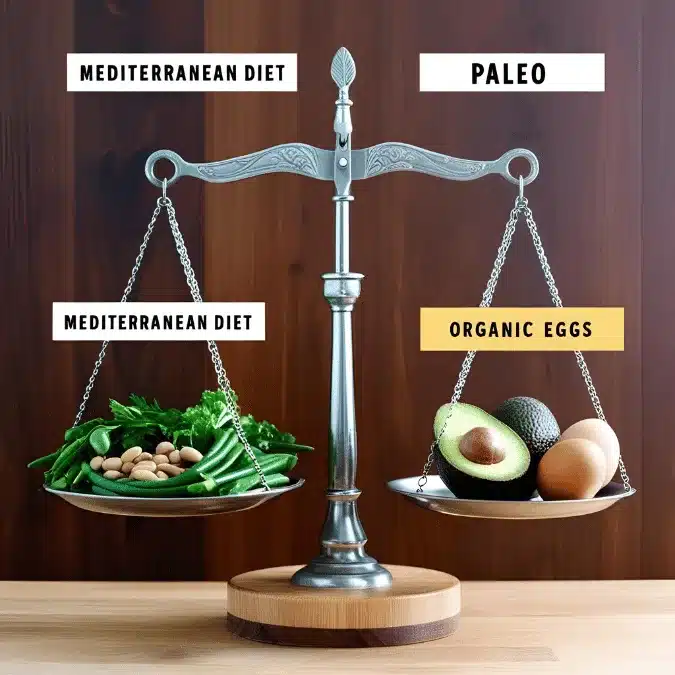
Health Benefits and Scientific Evidence
Mediterranean Diet Benefits
The Mediterranean diet is backed by extensive science and clinical studies over many years. One large study published in the New England Journal of Medicine found that eating this way significantly decreases the risk of cardiovascular events (such as heart attacks) by 30% or more.
Research consistently shows fantastic health benefits, from better weight management and improved cognitive function to reduced inflammation. The diet, which is rich in omega-3, essentially fish, antioxidant-rich vegetables, and heart-friendly olive oil, offers protection against chronic diseases.
Longer trials have confirmed that people eating a Mediterranean diet enjoy better blood sugar control and a lower risk for type 2 diabetes. The high fiber content, combined with a well-rounded nutrient composition, helps keep blood sugar levels stable throughout the day.
Paleo Diet Benefits
Few long-term studies have been published on the Paleo diet compared with the Mediterranean diet, but preliminary data suggest that it offers health benefits. Several clinical studies suggest possible benefits for weight loss and metabolic health.
Perhaps the Paleo diet’s most effective health benefit is its effects on blood sugar control. Removing processed foods and refined carbohydrates can also lead to more stable energy levels and improved insulin sensitivity for followers.
However, recent studies suggest that a Paleolithic diet can lower markers of inflammation in humans. In terms of inflammatory biomarkers, one extensive six-month intervention found that those adhering to a Paleo pattern had substantially lower inflammatory biomarkers.
The emphasis on whole foods and lean proteins is thought to improve gut health and reduce symptoms of autoimmune conditions. “More long-term trials would be important to help us understand the long-term consequences of a strict Paleo-type diet.”
Key Differences Between the Diets
Food Restrictions and Allowances
The Mediterranean Diet vs Paleo have very different dietary patterns. Although both diets center around consuming whole foods, their rules result in other ways of eating. It is not as strict as the Mediterranean diet, where whole grains, legumes, and dairy products are part of it. It advocates moderation with red wine and with traditional cultural foods.
The Paleolithic diet is much more restrictive and removes multiple entire food groups—a marker for a type of dietary pattern analysis. It eliminates grains, legumes, dairy, and processed foods, emphasizing foods that our hunter-gatherer ancestors would have eaten. This leads to a more limited eating pattern that requires some thought to balance the nutrients sufficiently.
Lifestyle and Sustainability
These diets also differ significantly in lifestyle and sustainability beyond food choices. Rich in whole grains, fruits, vegetables, beans, and healthy fats and low in added sugars, red and processed meats, and dairy, the Mediterranean diet is more than a dietary pattern. Its focus on socializing breaks the lone-eating model. Emphasizing less environmentally intensive foods encourages more sustainable choices.
On the other hand, while the Paleo diet is health-oriented, it can be not easy to follow in the long term. Its focus on grass-fed meats and organic produce often generates higher grocery bills. This dietary pattern may also require a more significant environmental footprint due to its reliance on animal proteins.
Mediterranean eating tends to accommodate different lifestyles and social scenarios, whereas the Paleo challenge may take more planning and preparation. This level of flexibility can also significantly affect which dietary pattern people stick with over the long run.
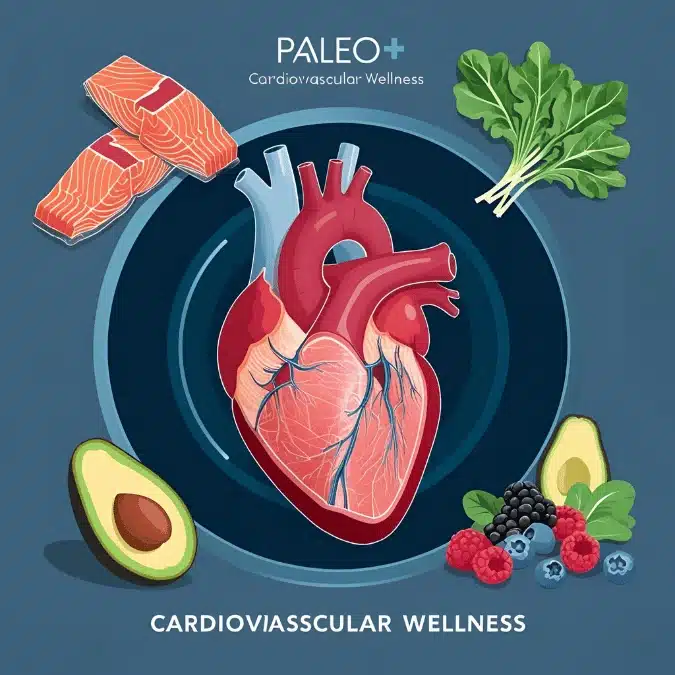
Impact on Chronic Diseases
Disease Prevention and Management
Mediterranean Diet vs Paleo diets have been shown to have beneficial effects in preventing and managing chronic disease. Studies show that these eating patterns are associated with a substantial decrease in risk factors for many diseases.
There is well-established science behind the Mediterranean diet’s effectiveness in preventing heart disease and lowering cause mortality rates. Studies have shown that those who adhere to this eating pattern have a 25-30% lower risk of cardiovascular diseases compared to those eating standard Western diets.
The Paleo diet (despite a dearth of long-term studies) shows promise in managing chronic conditions. Its focus on whole, unprocessed foods and no refined sugars helps combat inflammation — an underlying driver of many chronic diseases.
Both diets excel at:
- Lowering blood pressure
- Enhancing insulin sensitivity
- Lowering inflammatory biomarkers
- Help maintain healthy weight management
What distinguishes these diets is their holistic perspective on preventing disease. The Mediterranean diet’s emphasis on whole grains and legumes offers fiber and key nutrients that are protective against chronic disease. At the same time, the Paleo diet’s removal of processed foods and its emphasis on lean proteins may lessen inflammatory responses.
The latest research suggests following either of those diets is associated with a lower risk of type 2 diabetes, some cancers, and neurodegenerative diseases. Scientists now have better evidence for its long-term disease-preventive qualities in the Mediterranean diet.
Choosing Your Ideal Diet
Personal Factors to Consider
When choosing between the Mediterranean Diet vs Paleo , a few personal factors will help you decide which of these healthy diets may suit you best.
Your age and any medical conditions you have should guide your choice.” If you have heart disease or high cholesterol, the Mediterranean diet should do you the most good because of its high ratio of healthy food, such as olive oil and fish. For people with autoimmune conditions, the Paleo approach may help reduce inflammation.
Take into account your lifestyle and schedule. Another strength of the Mediterranean diet is that it offers more room for flexibility, so it is easier to adhere to when eating out or traveling. The Paleo diet demands more upfront meal planning and preparation, which could be a struggle for those with busy schedules.
The type of food you eat is also essential. The Mediterranean eating plan will be more filling if you like grains and legumes. But if you favor meat-focused meals and are fine forgoing certain food groups, the Paleo diet may be more up your alley.
Cost is another factor to consider. The Mediterranean diet is generally more affordable, as it emphasizes whole, plant-based foods. The Paleo diet’s focus on grass-fed meats and 100 percent organic produce can strain your wallet.
Finally, consider the long-term commitment. The healthiest diet is one you can stick to long-term. More flexible and potentially easier to pull off, the Mediterranean diet tends to be more sustainable, while the stricter rules of the Paleo diet could be devoted.
Making the Transition
Practical Implementation Steps
A balanced change to either the Mediterranean diet or the Paleolithic diet. For those who want to give the Mediterranean diet a try, they may begin by gradually adding more plant-based foods and olive oil to meals. As they transition to this eating pattern, it can be helpful to track their progress using the Mediterranean diet score.
If you’re wondering about the benefits of a paleo diet, start cutting out processed foods and grains and eat more lean meats , fish, and vegetables. Paleolithic Diet Score System to follow the principles of a Paleolithic diet
Here are some steps for a gradual transition:
- Swap out the refined grains for whole grains (Mediterranean) or skip them altogether (Paleo)
- Eat more fresh fruits and veggies
- Replace fats such as butter with healthier options such as olive oil
- Cut out processed food
- Prepare meals in advance to get proper nutrition
Implement in small increments, building to full implementation in 4-6 week increments. This method makes it easier to avoid feeling overwhelmed, increasing your likelihood of staying on either diet over the long term.
Conclusion
Having explored the key differences between Mediterranean Diet vs Paleo, collectively, they uniquely complement varying lifestyle needs. However, distinct nutritional value and health benefits do exist. The Mediterranean diet stands out with research-supported benefits for heart health and its relaxed approach. In contrast, the Paleo diet attracts those seeking a stricter, elimination-based road to health. Remember that the best diet is one you can stick to long term.
Whether you prefer the Mediterranean diet’s focus on olive oil and whole grains or the Paleo diet’s emphasis on lean meats and avoiding dairy, the key to success is selecting a plan that fits your health goals and day-to-day life. You might try a two-week trial of your chosen diet to see how your body reacts. Are you ready to start your path to a healthier you? Gradually adding components of your diet of choice into your current diet. Monitor your progress, trust your body, and seek advice from a physician to ensure that your diet aligns with your personal health goals.
FAQs
1.Can I combine Mediterranean and Paleo diets for better results?
It is possible to combine features of both diets, but it is not recommended to follow them fully at the same time. Instead, select one more suited to your lifestyle and health goals. You can merge aspects that will be good, such as whole foods or lean proteins, while keeping the tenets of your diet intact.
2.How long does it take to see results on either diet?
Most people begin to see changes within 2-4 weeks of either diet. First, it may be improved energy levels, better digestion, a gradual decrease in weight, etc. However, more substantial health benefits, such as improved cardiovascular health and decreased inflammation, require consistent adherence for 3-6 months.
3.Are these diets suitable for vegetarians or vegans?
The Mediterranean diet is better able to accommodate vegetarians because it focuses on plant-based foods and includes dairy. The Paleo diet can be difficult for vegetarians because legumes and grains are not allowed. What both diets do clog up for vegans, however, is that both can be restrictive without planning and hacking.
4.Which diet is more budget-friendly?
The Mediterranean diet is generally more economical because it includes inexpensive staples such as beans, whole grains, and seasonal produce. The emphasis on grass-fed meats, organic produce, and specialty items like nuts and oils makes the Paleo diet more expensive.
5.Can I follow these diets if I have diabetes?
Both diets can be beneficial in controlling diabetes. The Mediterranean diet’s focus on whole grains and healthy fats promotes stable blood sugar levels. Compounding this is that the paleo diet limits processed sugars, promoting low-glycemic foods that help regulate blood sugar levels. Talk to your doctor before beginning either diet.
6.How do these diets affect athletic performance?
With careful planning, both diets can enhance athletic performance. The Mediterranean diet’s complex carbohydrates and healthy fats give you steady energy over time. A diet high in protein from the Paleo diet aids muscle repair and muscle gain. Athletes will need to adjust portions based on how much training they are performing and their specific goals.

